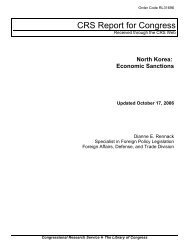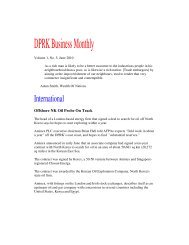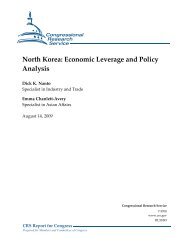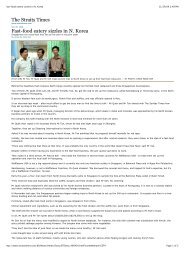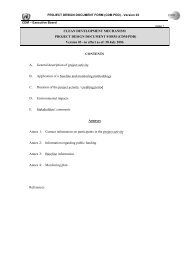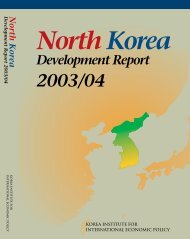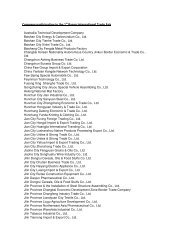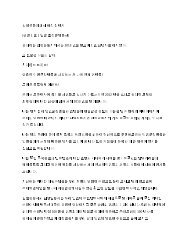North Korean Policy Elites - Defense Technical Information Center
North Korean Policy Elites - Defense Technical Information Center
North Korean Policy Elites - Defense Technical Information Center
Create successful ePaper yourself
Turn your PDF publications into a flip-book with our unique Google optimized e-Paper software.
a province of <strong>North</strong> Korea. “Think of the implications of this commerce,” says Wortzel,<br />
“hundreds of South <strong>Korean</strong> small businessmen are looking communist <strong>Korean</strong> Workers’ Party<br />
officials in the eye on a regular basis and explaining profit and loss.” 71<br />
So long as the South <strong>Korean</strong> government or a large South <strong>Korean</strong> company does not<br />
subsidize these enterprises, they may prove truly infectious to Kim Jong-il’s regime.<br />
K. REACHING INTO NORTH KOREA<br />
This paper has identified a number of divisions in <strong>North</strong> <strong>Korean</strong> society, first by<br />
suggesting a generational fault line, and second by considering a number of economic factors<br />
now observable in <strong>North</strong> Korea. The people in these divisions have something in common, but<br />
the nature of <strong>North</strong> <strong>Korean</strong> society prevents the formation of a group consciousness, or even<br />
much substantive communication among division members. For example, there is no doubt some<br />
cohesion among a circle of friends at Kim Il-sung University. They may even swap gossip based<br />
on stories heard at home, but any deeper feelings of alienation from the Kim Jong-il regime are<br />
likely kept strictly personal.<br />
A KBS survey of escapees offers some insight into this phenomenon. Asked how they<br />
learned of foreign radio broadcasts, only 15 percent indicated someone else had told them about<br />
them. Most said they “listened secretly by themselves.” 72 Each has his or her own yearning for<br />
information, but not much identity with others in a similar situation or who hold similar views.<br />
<strong>North</strong> <strong>Korean</strong>s don’t know whom they can trust and they instinctively understand the principle of<br />
compartmentalization. They are members of analytical divisions, not groups.<br />
The divisions presented here are illustrative, not exhaustive. Others will examine<br />
different phenomena that indicate fault lines different from those discussed here. Some of these<br />
may be congruent to those discussed in this paper; others may be crosscutting, resulting in new<br />
qualifications to the divisions identified here, in other words, sub-divisions.<br />
This analysis sought to identify divisions in <strong>North</strong> <strong>Korean</strong> society susceptible to what<br />
mainstream westerners might call positive and negative information and other stimuli. They run<br />
the range from idealistic university students or young foreign service officers to Bureau 39’s<br />
thugs and mules. The former may accept carefully crafted messages about better opportunities in<br />
democratic, free market countries like South Korea. The latter are streetwise (in the pejorative<br />
sense), and may react only to the giving or taking of money or the tough talk of the back streets.<br />
71 Wortzel.<br />
72 Paek Sung-ku.<br />
V-17



